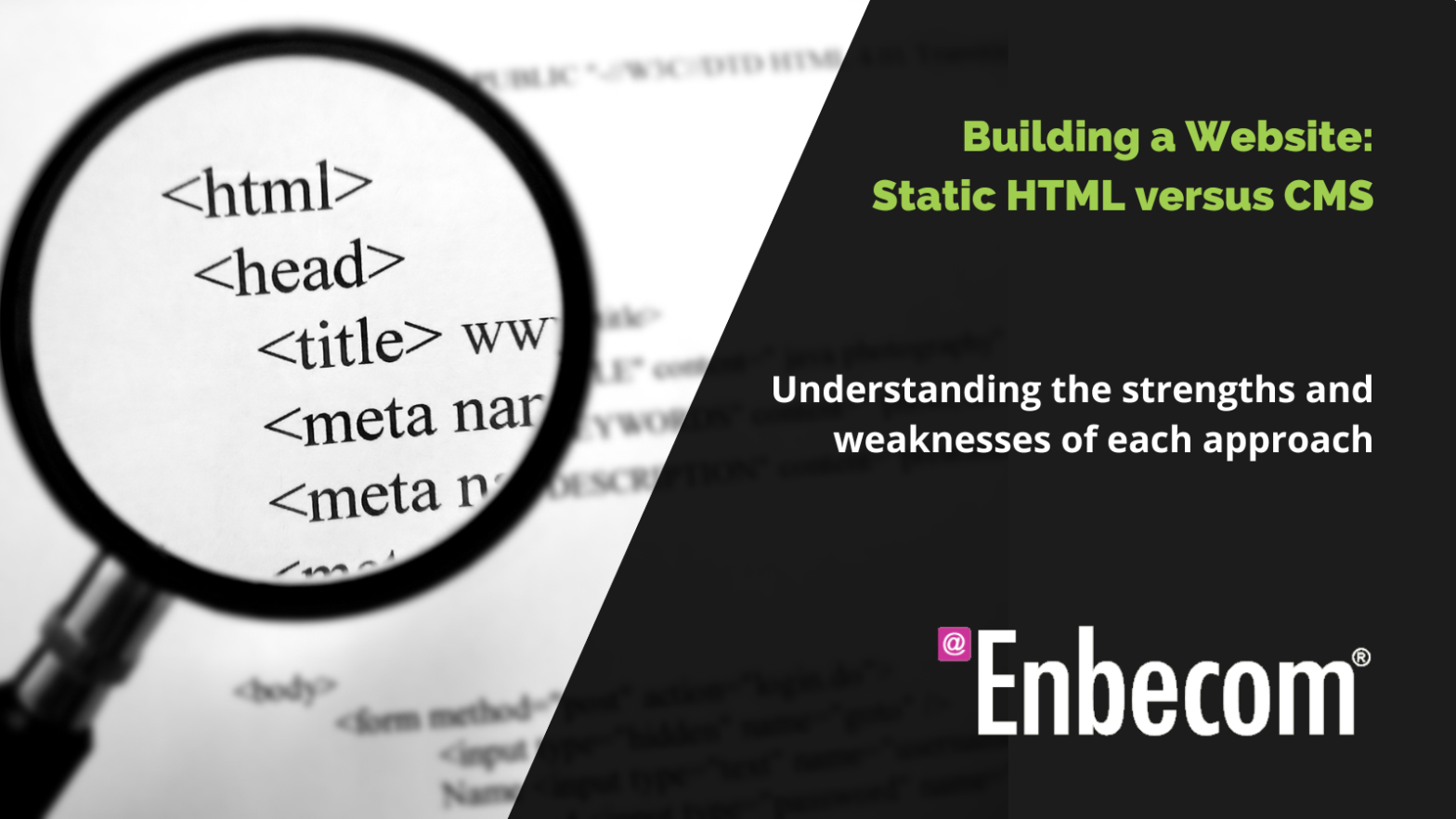In the “old days” of websites, static HTML was the main choice. Despite the advent of Content Management Systems (CMS) such as WordPress or Drupal, static HTML is still up there as a possibility for some types of website, especially where there’s infrequent updating, minimal data gathering and a need for speed. You need to have a think about several factors before making a choice. Here, we’ll explore when the simplicity of static HTML, CSS, and JavaScript might be a superior choice over CMS-based platforms.
One of the main advantages of building a static website using HTML, CSS, and JavaScript is the unparalleled control it affords. With a static site, developers can mould every element of the website down to the tiniest detail. In contrast, CMSs are often characterised by their templates and plug-ins, which offer limited customisation. If a highly unique design or a specific functionality is required, static HTML might just be the way to go.
Another compelling reason to opt for static HTML over a CMS is speed. Websites created with HTML are usually faster because they don’t require database queries to load. Instead, the browser receives an HTML file directly, resulting in a quicker page-load speed. In an era of short attention spans, a fraction of a second can significantly influence user experience and conversion rates.
Static websites also excel in terms of security. Since they don’t have databases and don’t rely on server-side processing, they are significantly less susceptible to hacks and attacks compared to dynamic CMSs. A CMS can be an easier target for malicious intent, simply because it has more points of vulnerability due to plugins and databases.
Despite these advantages, however, static websites have their limitations. They are less suited to large-scale projects, where a CMS’s dynamic nature makes it easier to manage a large amount of content. Additionally, static websites are less user-friendly for those without coding knowledge, whereas a CMS generally allows for easy content updates, even for non-technical users.
So when is static HTML a better choice? If your website is relatively small with few pages, doesn’t require regular content updates, or needs a highly customised design, a static HTML website could be an excellent choice. It can also be an ideal choice for a portfolio or a landing page.
On the other hand, if you run a blog, an online shop, or a news website that requires frequent content changes, a CMS would be more practical. The choice ultimately boils down to your specific needs, technical expertise, and the nature of your website.
So the choice between a static HTML website and a CMS-based website is largely a question of complexity versus control, and dynamic flexibility versus speed and security. By understanding the strengths and weaknesses of each approach, you can make an informed decision that best suits your individual needs and those of your project. Remember, the ultimate goal is to create a website that offers a great user experience and effectively communicates your brand or message to your target audience.
It won’t surprise you to know that Enbecom hosting is ideally suited to both types of website. Check out our bundled hosting and specialised WordPress hosting plans.

